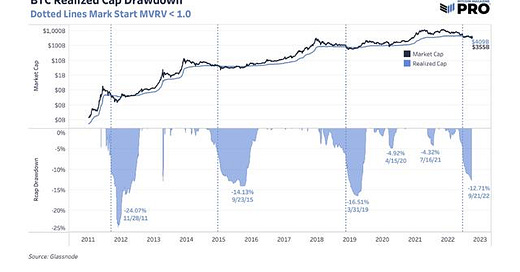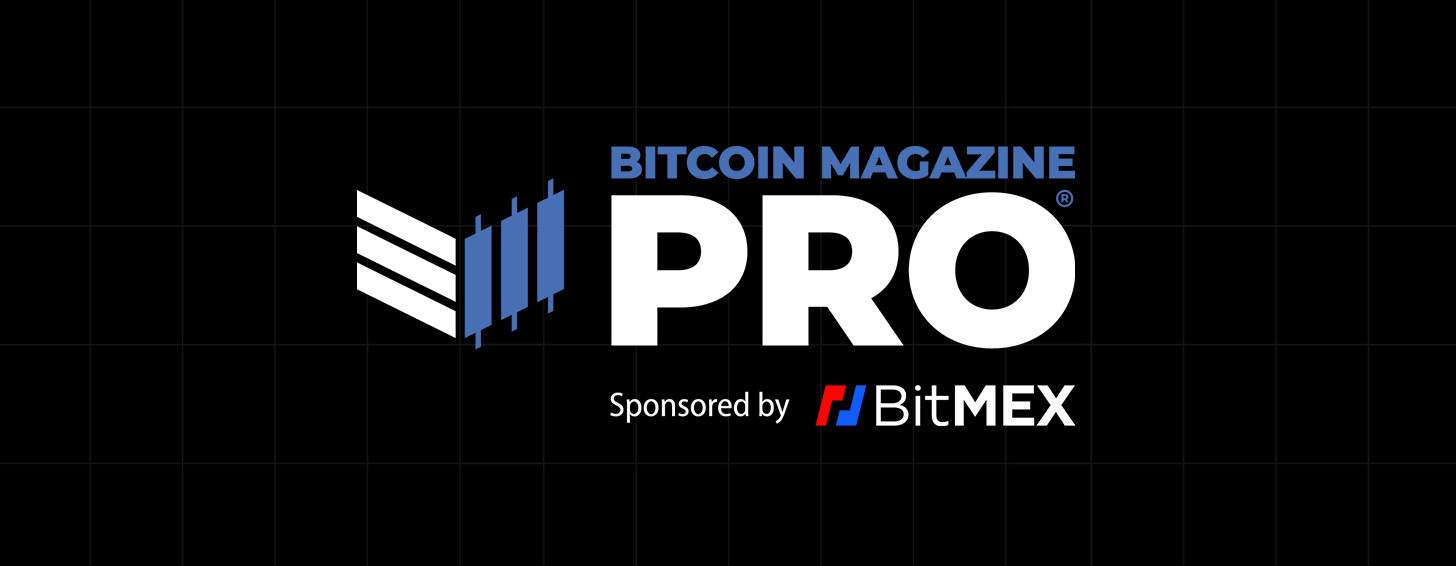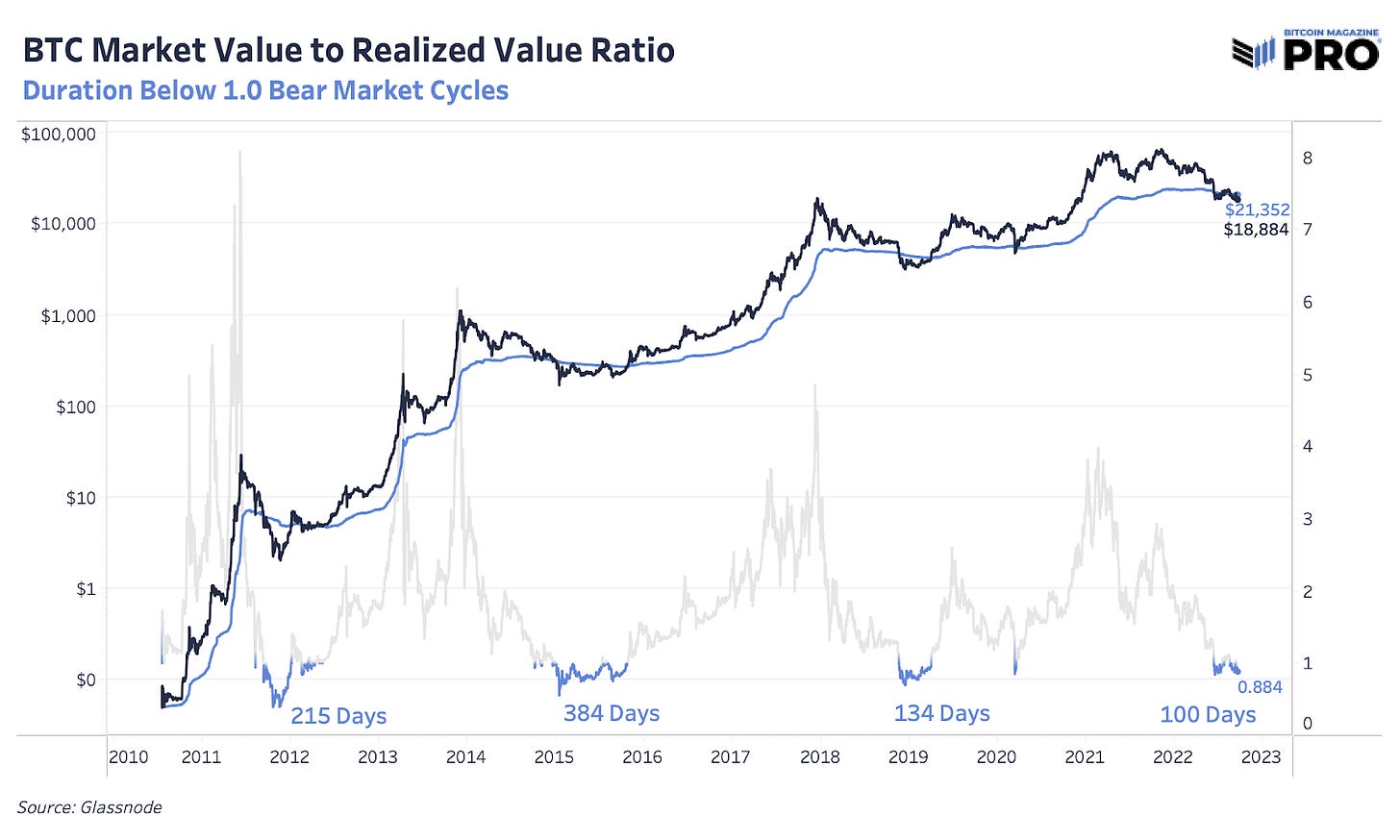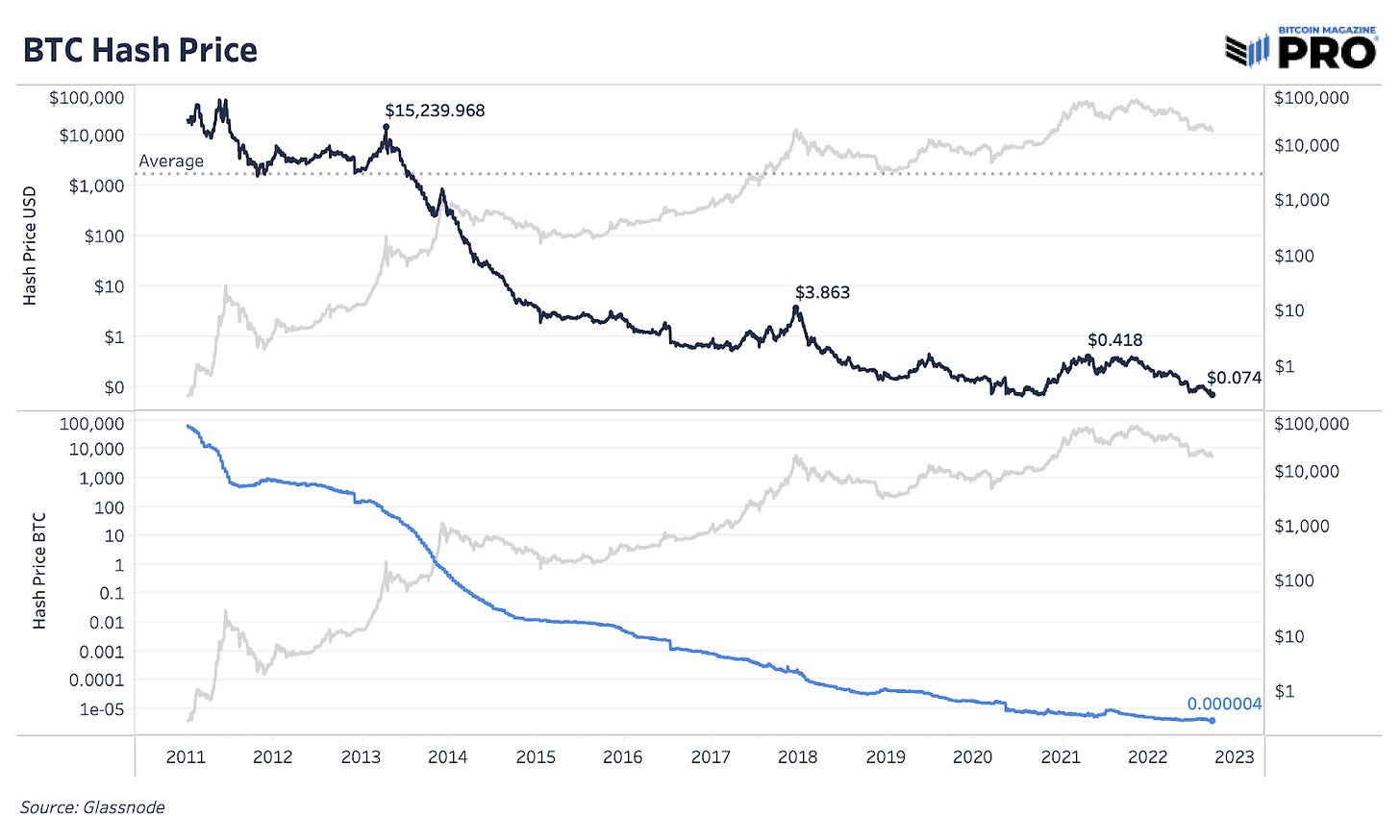Markets Brace For Max Pain: Is The Bottom In For Bitcoin?
A review of our medium-term thesis for bitcoin and the larger macro picture using bitcoin-specific metrics provides a framework for considering the looming uncertainty and volatility that lie ahead.
Relevant Past Articles
Maximum Pain: Are We There Yet?
The word of the day (and yesterday) is pain. That was Federal Reserve Chairman Jerome Powell’s favorite go-to in the September Federal Open Market Committee meeting. One simple economic release and subsequent press conference sent the market into a period of mild panic with rates soaring higher, volatility heating up and equities selling off with bitcoin following. The S&P 500 Index lost a critical support level of 3850, bitcoin was sent back to local lows of $18,100 and the 2-year Treasury went over 4.1%.
Even an expected 75 basis point hike was not enough to turn markets around as the complementary info across the Fed’s forecasts and Powell’s speech gave risk assets more to be concerned about. Powell reiterated many times that more economic pain (job losses, housing market declines, etc.) is coming as a result to solve the inflation problem at hand. He cited a lack of disinflation in their favorite “core PCE” (personal consumption expenditures) measure and reiterated his Jackson Hole hawkish speech, noting that they won’t stop until the job is done.
It’s now do or die for risk assets with the options to see an immediate relief rally this week or likely more downward continuation in valuations and prices across the board.
Our thesis here at Bitcoin Magazine Pro, as long-term bull-biased bitcoin proponents, is that the macroeconomic headwinds are in the driver’s seat, and given the price action in global currency and bond markets, the ultimate panic moment has yet to arrive. We are open-minded and flexible to change that stance, but as objective market analysts, we see and report what is in front of us. More on this later.
On-Chain
Although on-chain cyclical metrics can prove useful for assessing long-term value buying (or selling) opportunities and Bitcoin’s economic behavior, we’ve highlighted fewer of them over these past months as we felt they were less relevant to short-term price action compared to current macro headwinds.
Looking at the history of bitcoin market cycles, when diving into on-chain data, one immediately notices the consistency in which the bitcoin price falls below its realized price (average cost basis of all bitcoin as per their last movement on-chain) during the depths of a bear market. In previous cycles, that’s not been a one-off event but rather one that also comes with duration. We’ve been emphasizing for months that this bear market can last longer than most expect and that the duration component is more painful than the percentage drawdown.
“As the average holder is underwater, most marginal sellers have already sold their holdings, and while further downside is possible, the ‘pain’ market participants feel is in the form of a prolonged period of time spent underwater rather than rapidly declining prices that characterized the start of the bear market.” - When Will The Bear Market End?, July 11, 2022


The Market Value to Realized Value Ratio (MVRV) is an easy, intuitive metric to gauge the bitcoin price relative to the network participants' average cost basis. Today, the metric shows that price is 88% of its realized price and in its 7.8% percentile. What you will also notice is that 1) we’ve seen lower values and percentiles in previous cycles and 2) these lower values can exist for a longer period of time.
The second chart shows the duration of MVRV being below a value of 1. In previous “bear market” cycles this lasted 244 days on average. We’re 100 days in so far and in the 2018 cycle MVRV was below 1 for 134 days. None of these cycles faced the structural equities bear market and recession territory we find ourselves in today either.
We expect a higher probability that we reach lower prices this cycle, but these metrics are designed to see bitcoin through a 5-10 year lens at least. Not everyone will time the market and will be okay with getting in and out of bitcoin during undervalued and overvalued periods. We’re in one of those times today and think that it can get more undervalued than it is today.


The BTC/USD daily exchange rate is set completely at the margin and, given the increasing macroeconomic headwinds, marginal sellers have and likely continue to dominate marginal buyers until a distinct change in liquidity conditions occurs.
A more zoomed-out view shows that this drawn-out process of capitulation transfers the coins into stronger, and more well-capitalized hands.


For those that see this as the time to get long-term undervalued bitcoin, the realized market cap is an assuring chart which shows the log growth of bitcoin’s cost basis over time. The cost basis has only dropped a maximum of 24.07% from cycle highs and is currently down 12.71%. This is the chart which we think most “non-bitcoin” investors don’t grasp. Even in the “everything speculative” bubble, which bitcoin is a part of, the cost basis of the network is ever increasing or marginally declining despite the wild daily exchange rate volatility.
Mining
Another chart which is overlooked and misunderstood by many is Bitcoin’s ever-growing hash rate over time. Although the waters are muddied with FUD around mining bans, the popping of the bitcoin speculation bubble for good and environmental concerns, mining hash rate lives on. Sometimes you have to listen to what the market is telling you and it's telling us that there is relentless demand for mining bitcoin.
Despite bitcoin’s price now being down over 70% from the November 2021 high, hash rate has reached a new all-time high, is up 34% year-to-date, and is up 9.18% over the last 30 days. That said, our base case is that the extent of miner capitulation isn’t fully over yet.
We could still see hash rate suffer another 36% style drawdown, like the 2018 cycle. During that event and the depths of the bear market, it took the hash rate around six months to fully recover. But it did recover and the entire industry exploded in size afterwards.
While hash rate did suffer a 17.4% drawdown from its all-time high previously in 2022, hash price (miner revenue per terahash) has yet to make a new low this bear market. With that in mind, we assign a strong probability of mining-related equities and the price of ASICs to continue to see downside relative to bitcoin the asset, which reflexively places additional pressure on the BTC/USD exchange rate as miners become forced sellers.
Over the long term, the squeeze of miner margins forces the least efficient operations to liquidate their assets and close down shop. The ASICs and/or bitcoin holdings will then hit the market and find their home with a new buyer and a clearing market rate. This brutally capalisitic process, with both the miners and the holders of bitcoin, hardens the network’s resilience and strengthens the holder base, priming the conditions for the next parabolic run.
More on the macroeconomic conditions in tomorrow's issue!
Thank you for reading Bitcoin Magazine Pro, we sincerely appreciate your support! Today’s article is free to the public, so feel free to share it far and wide. Please
Bitcoin doesn't have borders, neither do we. Ticket prices incrase Friday 9/23 at Midnight. Take 10% off your tickets for Bitcoin Amsterdam (October 12-14) with code “BMPRO”: http://b.tc/conference/amsterdam
















"Sometimes you have to listen to what the market is telling you and it's telling us that there is relentless demand for mining bitcoin"... I think the speed and amount of hash rate that came back online post the China ban surprised everyone. But price helped drive the incentive. More recent hash rate continued uptick though - my assumption is that a good amount of that has to be driven by public miner orders being delivered and the inevitability of the machines getting plugged in. Difficult to know what hash rate would be right now if not for that dynamic. Another example of where the world gorged itself on debt.
No clue if the bottom is in or not but I have increased my DCA